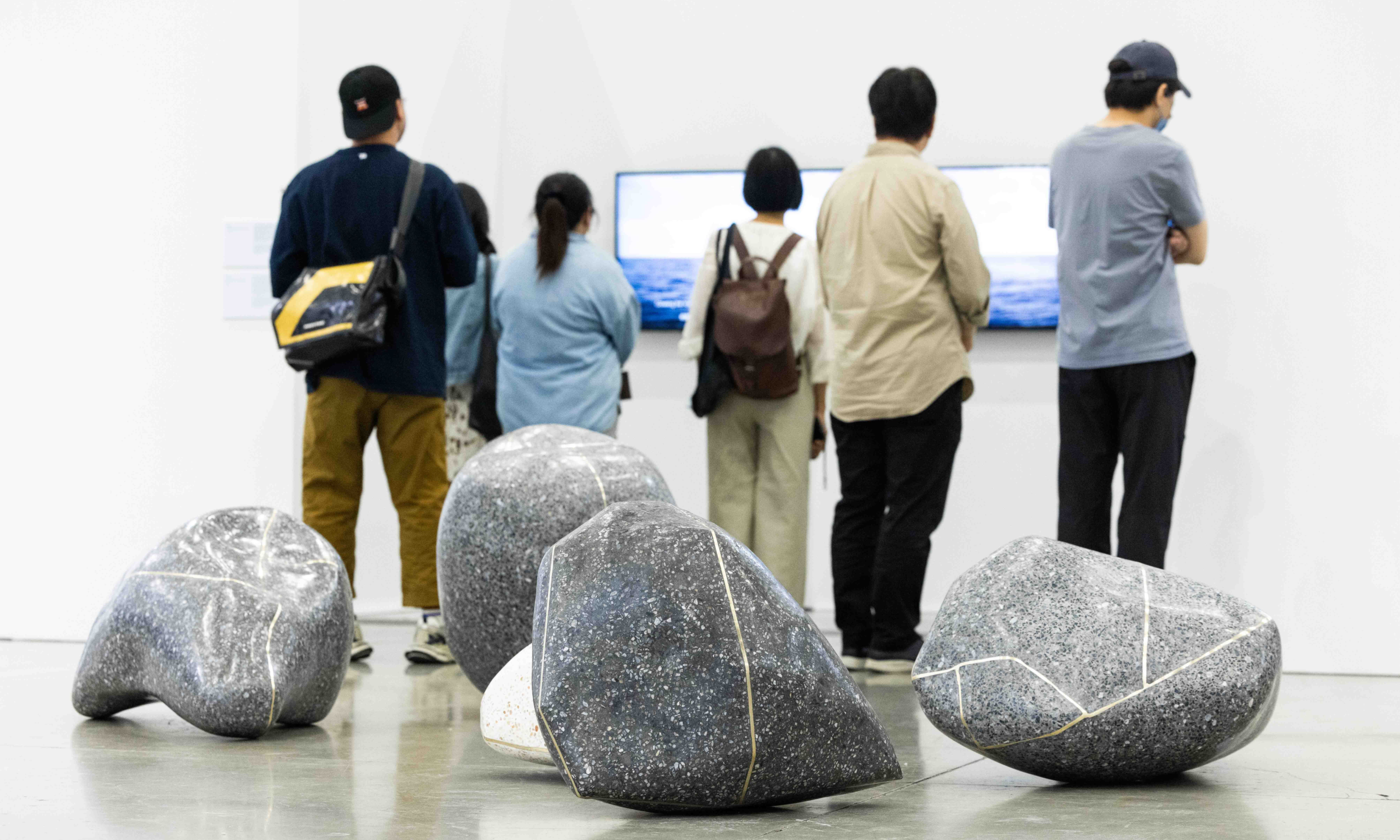Installation view of the special exhibition Before Thunders at Taipei Dangdai 2024
Courtesy Taipei Dangdai
A new, government-backed showcase of Taiwanese artists brought fresh energy to the fifth edition of Taipei Dangdai Arts & Ideas, which ran from 10 to 12 May. The fair organisers invited four curators from its lectures forum at last year’s edition to choose ten artists for the non-commercial presentation Before Thunders, utilising a grant programme earmarked for promoting mid-career artists from Taiwan.
“The entire process started only a month before the opening, during which we also have the earthquake from Hualien [on 3 April] really hovering around the air,” says curator Zian Chen, a Hualien native based between Taipei and Shanghai.
Working with former Taipei Contemporary Art Center director Esther Lu, the Singapore-based curator and writer Wong Binghao and the Mori Art Museum adjunct curator Martin Germann, Chen wanted to create a show beyond the usual emergency fundraisers, but which still was a “response to the critical environment that really reshapes our ground of existence”, he says.
Of the selected artists, Chen says that En-Man Chang used the funding to create a new work responding to the idea about “a moment of radical change”, environmentally and culturally. Su Yu-Xin and Chiu Chen-Hung, also both originating from Hualien, contributed existing works contemplating the possibility of renewal offered by crises. Hsu Chia-Wei “ridiculed the notion of unlimited growth of technology, which actually plagued Taiwan to be so dependent on high-tech, using a metaphor of the whole earth as a battery”, Chen says.
Chen adds that the curators encountered some resistance from the ministry about including the Taipei-based Iranian-American artist Raha Raissnia, but the curators insisted. “The intensity of her work harbours an enormous autonomy,” says Germann. “It also connects Eastern and Western thinking, which, from her American-Iranian position, is maybe more important than ever… [and helps] to show the visitors also in how far Taiwan is a hub for international artists.”
Taiwan’s Hong Foundation, which since 1971 has used funding from electronics manufacturing to support local art, literature and music, also had a presence at this year’s Dangdai. An installation by Cheng Hsien-Yu collected (uncharged) credit card swipes by visitors to accumulate the artist’s fee, in a comment on the commercialisation of art. Cheng also had a concurrent show at Taipei’s Hong Gah Museum, There Is Another Capital Beneath the Waves (until 30 June), along with Chang Ting-Tong and Hsu Chia-Wei. Chang also staged an interactive performance at a love hotel during the fair. The foundation also supported the Taiwanese artists’ show Ghost in the Sea, about the historic “coolie” trade, by Musquiqui Chihying at Taiwan Contemporary Culture Lab (C-LAB).
“We are committed to support the local art community and we have worked hard to deepen our roots in the Taiwanese culture scene, and the launch of the new exhibition co-hosted with the Ministry of Culture has been an integral part of this journey,” says the fair’s co-director Robin Peckham. “Everyone has been delighted with the response to the exhibition, and we look forward to exploring new ways to promote the rich cultural production of Taiwan to an international audience.”
This year’s edition of Taipei Dangdai, part of The Art Assembly, an affiliation of three Southeast Asia-focused art fairs, was slimmed down to 78 galleries from last year’s 90, losing stalwarts like Ink Studio and Lehmann Maupin but gaining several smaller galleries like Inna Art Space (Hangzhou and New York) and Galerie Dumonteil (Shanghai and Paris). The fair organisers declined to specify the event’s floor size but it appeared to occupy only two-thirds of the Taipei Nangang Exhibition Center, which previous editions had filled.
The Taiwan capital anticipates a new boost of activity with the inaugural Taipei Art Week launching this October under direction of the Taiwan Art Gallery Association, alongside Art Taipei, one of Asia’s longest-running contemporary art fairs. “We believe this is a testament of the vibrant art and cultural scene in Taipei,” says Peckham.
While Dangdai week’s biggest buzz went to shows of international figures—William Kentridge at Taipei Fine Arts Museum and Rodin at the newly-opened Fubon Art Museum—local shows included Chang Li-Ren’s exploration of Taiwanese economic history at the Museum of National Taipei University of Education (MoNTUE) and Hello, Human a humorous group take on Artificial Intelligence (AI) at the Museum of Contemporary Art Taipei.
“While the international visibility of Taiwanese artists may unfortunately not be as high as we’d like, it’s important to acknowledge that those who have gained recognition have done so through their own exceptional talent and merit,” says Grace Cheung, the executive director of Hong Foundation. Even major artists like Tehching Hsieh, Shu Lea Chang, Yuan Goang-Ming and Yu Cheng-Ta would benefit from greater recognition. “Support for artists often tends to focus on local or inward-facing initiatives” in Taiwan, which the foundation hopes to change with a new fellowship at Amsterdam’s Rijksakademie, Cheung adds.

